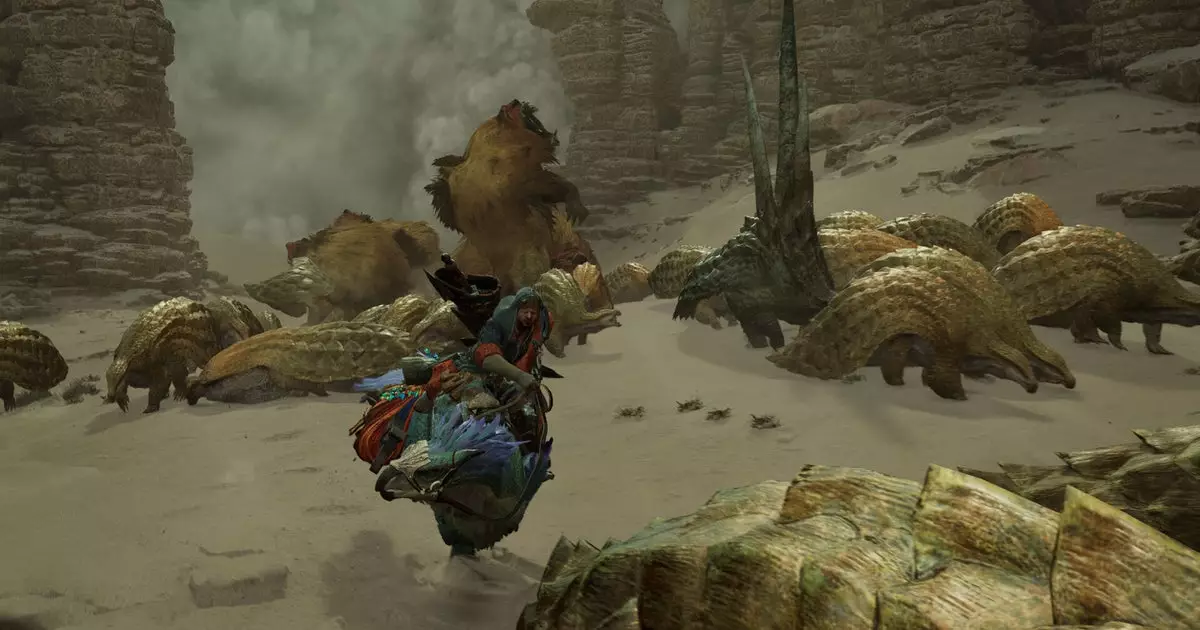Stepping into the realm of Monster Hunter Wilds, one is immediately drawn into a vibrant world filled with intricate character customization and an expansive environment. The initial hours of gameplay seem to revolve around personalizing one’s avatar, including the whimsical challenge of perfecting the hue and aesthetics of one’s feline companion. This trait is emblematic of the Monster Hunter franchise’s dedication to player agency, allowing for a deeply personal gaming experience. However, despite the delight of customization, it is worth noting that such initial engagements may prevent players from diving deep into the more profound mechanics, particularly combat, which is at the heart of the Monster Hunter experience.
While the allure of character customization is undeniable, the crux of any action role-playing game lies in the combat mechanics. In the case of Monster Hunter Wilds, the beta test has sparked discussions regarding the perceived “bonk quality,” or the satisfying feedback players receive when their attacks connect with opponents. This term has gained traction in gaming communities, highlighting a crucial aspect of the player experience. Reports indicate that there is a mixed reception surrounding the combat, specifically regarding the feel of weapon hits. Players have noted a potential decrease in the satisfaction derived from landing attacks, a sentiment backed up by a viral analysis from a content creator known as Blue Stigma.
At the core of this discourse lies the concept of ‘hitstop.’ Essentially, hitstop refers to a brief pause in animation that occurs when a weapon strikes an enemy, which serves to emphasize the weight and power of the attack. It creates a momentary disconnect that invigorates the player with a sense of impact. A longer hitstop can enhance the player’s experience by providing a visual and visceral cue that they have successfully landed a potent blow. In earlier installments of the Monster Hunter series, various weapons enjoyed a robust hitstop that contributed to a feeling of empowerment during combat.
However, it seems that the early release of Monster Hunter Wilds has deviated from this established norm. As pointed out in a compelling comparison by Blue Stigma, many weapon types in the beta appear to lack the anticipated hitstop. For instance, various attacks that previously had a comforting quarter-second pause now feel significantly less impactful, plunging to a startling zero frames of hitstop. This technical alteration can lead to what seems like a ‘limper’ combat experience that diminishes the gratification associated with wielding powerful weapons.
The player community’s response to these changes has been vocal, exhibiting disappointment at the altered weapon feedback. Players who have embraced the detailed, almost tactical nature of combat in prior games find themselves grappling with a sense of disconnect when engaging with foes in Wilds. The community engaging in debates about these mechanics contrasts their past experiences, where they felt a genuine, tactile response to their maneuvers. This change raises questions about game design priorities: Should developers prioritize dynamic visuals and animations over fundamental player satisfaction?
Critically assessing the combat feedback in Monster Hunter Wilds may lead to broader considerations about how developers can strike a balance between innovation and tradition. It’s not merely about creating a visually stunning experience but ensuring that the essential core gameplay loop remains engaging and satisfying. The actions in the game must resonate with players, making their experience feel weighty and consequential.
As the gaming community eagerly anticipates official feedback from Capcom regarding the ongoing development of Monster Hunter Wilds, it is clear that player impressions will heavily influence the final product. Developers must weigh community sentiment seriously, ensuring that the nostalgia and expectations from previous titles are not lost in the transition to new mechanics. As this discussion unfolds, players remain hopeful that their voices echo through development, encouraging enhancements that revitalize the satisfying dance of combat that Monster Hunter is revered for. Thus, while Monster Hunter Wilds ushers in new possibilities, it’s essential for the franchise to maintain the heart of what makes monster hunting an exhilarating experience—powerful, rewarding combat.

